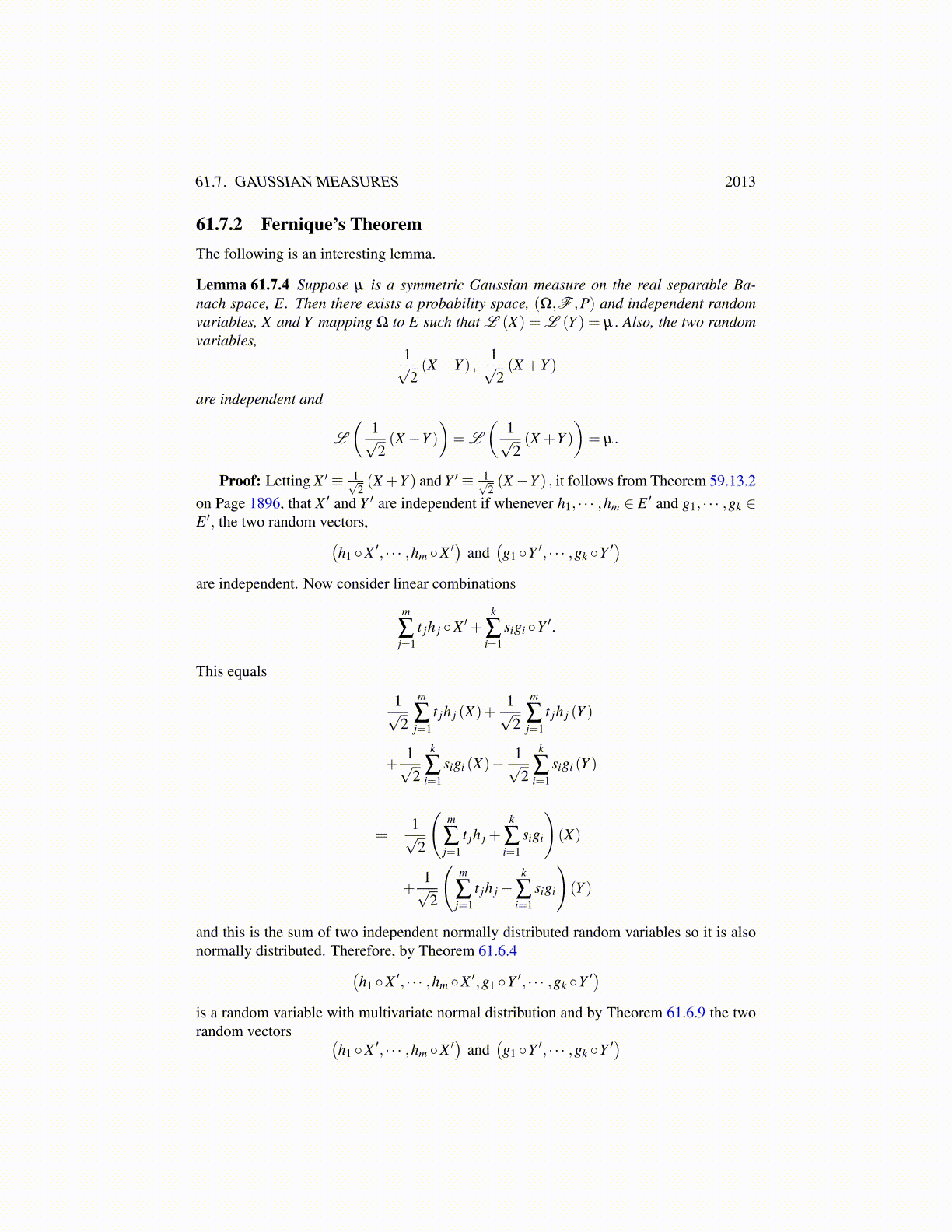
61.7. GAUSSIAN MEASURES 2013
and letting n→ ∞, it follows
µ (D(a,r)) = µ (−D(a,r))
Therefore the same is true with D(a,r) replaced with an open ball. Now consider
D(a,r1)∩D(b,r2) = ∩∞k=1 f−1
k (D( fk (a) ,r1))∩∩∞k=1 f−1
k (D( fk (b) ,r2))
The intersection of these two closed balls is the intersection of sets of the form
∩nk=1 f−1
k (D( fk (a) ,r1))∩∩nk=1 f−1
k (D( fk (b) ,r2))
to which 61.7.24 applies. Therefore, by continuing this way it follows that if G is any finiteintersection of closed balls,
µ (G) = µ (−G) .
Let K denote the set of finite intersections of closed balls, a π system. Thus for G ∈Kthe above holds. Now let
G ≡ {F ∈ σ (K ) : µ (F) = µ (−F)}
Thus G contains K and it is clearly closed with respect to complements and countabledisjoint unions. By the π system lemma, G ⊇ σ (K ) but σ (K ) clearly contains the opensets since every open ball is the countable union of closed disks and every open set is thecountable union of open balls. Therefore, µ (G) = µ (−G) for all Borel G.
Conversely suppose µ (G) = µ (−G) for all G Borel. If for some f ∈ E ′,mµ ( f ) ̸= 0,then
µ(
f−1 (0,∞))≡ λ f (0,∞) ̸= λ f (−∞,0)
≡ µ(
f−1 (−∞,0))= µ
(− f−1 (0,∞)
)a contradiction. This proves the lemma.
Lemma 61.7.3 Let µ = L (X) where X is a random variable defined on a probabilityspace, (Ω,F ,P) which has values in E, a Banach space. Suppose also that for all φ ∈E ′,φ ◦X is normally distributed. Then µ is a Gaussian measure. Conversely, suppose µ
is a Gaussian measure on B (E) and X is a random variable having values in E such thatL (X) = µ . Then for every h ∈ E ′, h◦X is normally distributed.
Proof: First suppose µ is a Gaussian measure and X is a random variable such thatL (X) = µ. Then if F is a Borel set in R, and h ∈ E ′
P((h◦X)−1 (F)
)= P
(X−1 (h−1 (F)
))= µ
(h−1 (F)
)=
1√2πσ
∫F
e−|x−m|2
2σ2 dx